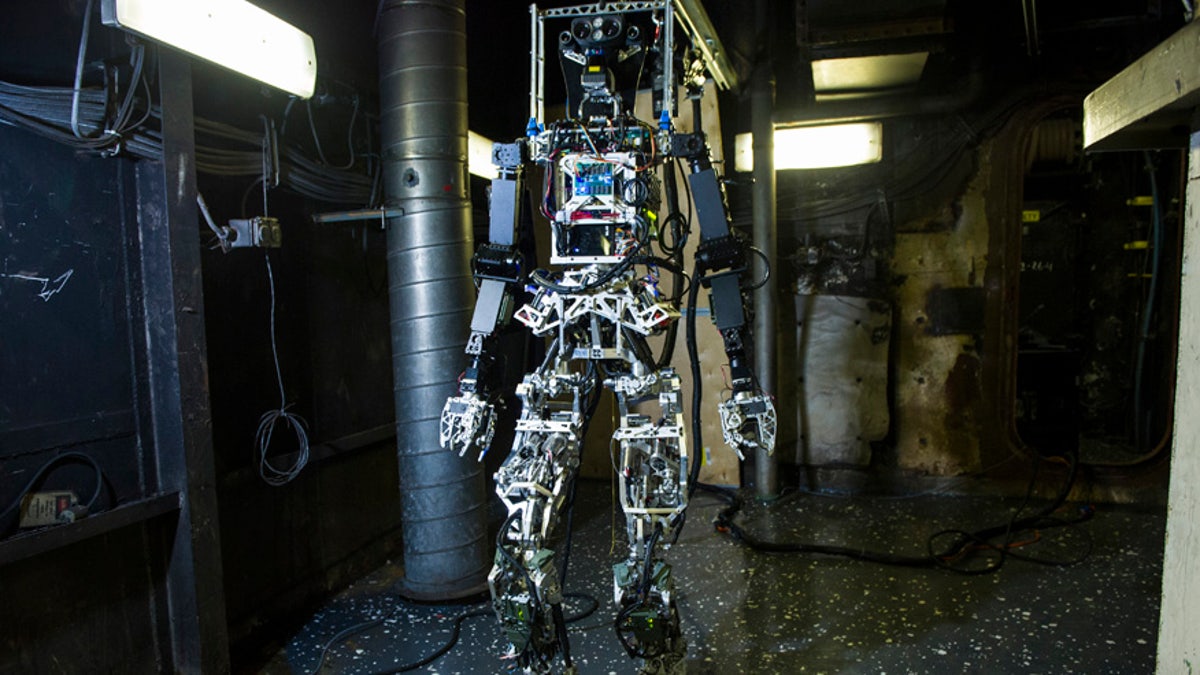
SAFFiR undergoes testing aboard the Naval Research Laboratory's ex-USS Shadwell in Mobile, Ala. (U.S. Navy photo by John F. Williams/Released)
A firefighting prototype robot was unveiled at the Naval Future Force Science & Technology EXPO in Washington D.C. on Wednesday.
Scientists also revealed details of the technology’s successful trials aboard the USS Shadwell, a decommissioned Navy vessel, last fall. Sponsored by the Office of Naval Research (ONR), the Shipboard Autonomous Firefighting Robot (SAFFiR) walked across uneven floors, used thermal imaging technology to identify overheated equipment, and used a hose to extinguish a small fire in a series of experiments.
SAFFiR is part of the Naval Prototype program Damage Control Technologies for the 21st Century or DC-21 – a program that aims to improve shipboard situation awareness and damage control capabilities with new tech.
The two-legged humanoid robot was developed by researchers at Virginia Tech and is helping ONR evaluate the potential uses of unmanned systems on naval vessels. In addition to damage control, scientists are also exploring the possibility of robot-conducted inspections.
Standing 5 feet 10-inches tall and weighing 143 pounds, SAFFiR uses sensors, including infrared stereovision and a rotating laser for light detection and ranging (LIDAR), to see through dense smoke.
"We set out to build and demonstrate a humanoid capable of mobility aboard a ship, manipulating doors and fire hoses, and equipped with sensors to see and navigate through smoke," said Thomas McKenna, ONR program manager for human-robot interaction and cognitive neuroscience, in a statement. "The long-term goal is to keep Sailors from the danger of direct exposure to fire."
The Navy says that SAFFiR is programmed to take measured steps and handle hoses on its own, but, at this stage, takes instructions from a computer console.
McKenna plans to sponsor a more advanced version of the robot as part of a longer-term program, which could include enhanced intelligence, communications capabilities, speed, computing power, and battery life.
The U.S. Navy is no stranger to sophisticated robotics. Last year, for example, GhostSwimmer, a small, unmanned, robotic vehicle, underwent testing at the Joint Expeditionary Base Little Creek, Fort Story in Virginia Beach, Va.
